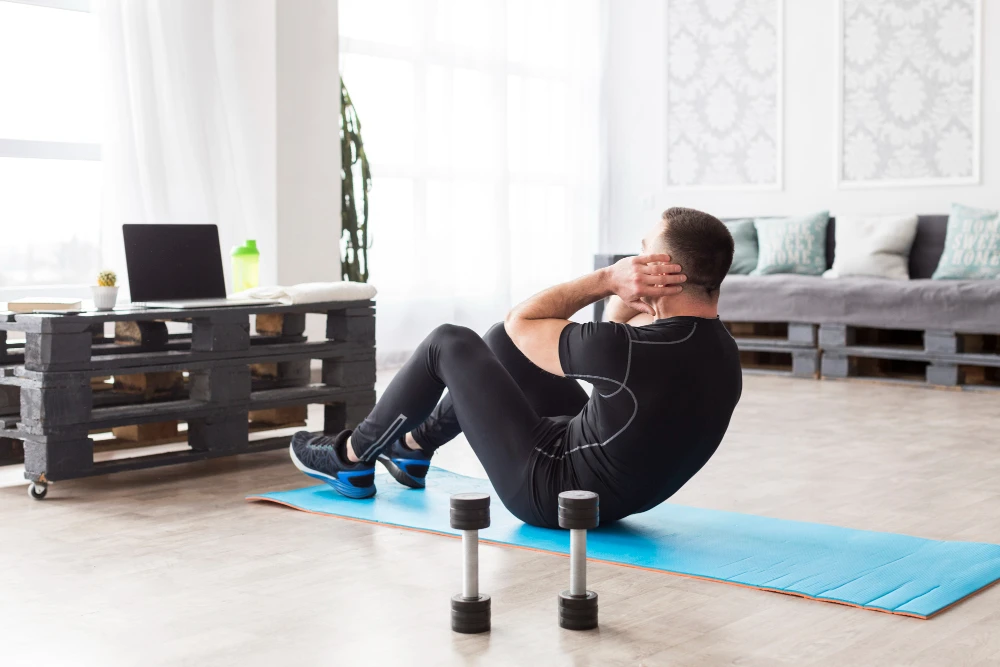If you’ve been lifting weights for some time, you’ve probably heard about isolation exercises and compound exercises. But what are they, and which is right for you? Isolation exercises target a specific muscle group, while compound exercises work multiple muscle groups at once.
Both types of exercises have their benefits, but which one you choose depends on your fitness goals. Some people swear by isolation exercises for building muscle mass, while others prefer compound exercises for overall strength and functional fitness.
In this article, we’ll explore the differences between isolation and compound exercises, the pros and cons of each, and how to decide which one is right for you. So whether you’re a seasoned gym-goer or just starting out, read on to learn more about isolation exercises vs. compound exercises.
What are isolation exercises?
Isolation exercises are exercises that target a specific muscle group. These exercises are designed to isolate a particular muscle or group of muscles and work them through a range of motion. Isolation exercises are typically performed with lighter weights and higher repetitions, and they’re often used to target smaller muscle groups that don’t get as much attention during compound exercises.
One of the benefits of isolation exercises is that they allow you to target specific muscle groups that may be lagging behind others. For example, if you’re looking to build bigger biceps, you might perform isolation exercises like bicep curls or concentration curls. These exercises allow you to focus on your biceps and work them to exhaustion, which can help to stimulate muscle growth.
However, one of the downsides of isolation exercises is that they don’t work multiple muscle groups at once. This means that you may need to spend more time in the gym performing isolation exercises to get the same overall workout as you would with compound exercises.
- Benefits of isolation exercises
Isolation exercises have several benefits, including:
- They allow you to target specific muscle groups
- They can help to correct muscle imbalances
- They’re great for building muscle endurance
- They can help to improve range of motion
- Examples of isolation exercises
Some examples of isolation exercises include:
- Bicep curls
- Tricep extensions
- Leg extensions
- Leg curls
- Calf raises
- Shoulder raises
What are compound exercises?
Compound exercises are exercises that work multiple muscle groups at once. These exercises are designed to mimic real-world movements and are often used to improve overall strength and functional fitness. Compound exercises are typically performed with heavier weights and lower repetitions, and they’re often used to target larger muscle groups like the chest, back, and legs.
One of the benefits of compound exercises is that they work multiple muscle groups at once. This means that you can get a full-body workout in less time than you would with isolation exercises. Compound exercises are also great for improving overall strength and functional fitness, which can help you to perform everyday activities more easily.
However, one of the downsides of compound exercises is that they can be more challenging to perform correctly. Because these exercises involve multiple muscle groups, it’s important to use proper form and technique to avoid injury.
- Benefits of compound exercises
Compound exercises have several benefits, including:
- They work multiple muscle groups at once
- They’re great for improving overall strength and functional fitness
- They’re more time-efficient than isolation exercises
- They can help to burn more calories and improve cardiovascular health
- Examples of compound exercises
Some examples of compound exercises include:
- Squats
- Deadlifts
- Bench press
- Pull-ups
- Push-ups
- Lunges

Isolation vs. Compound: Which is better for muscle growth?
When it comes to building muscle mass, both isolation and compound exercises can be effective. Isolation exercises are great for targeting specific muscle groups and working them to exhaustion, which can help to stimulate muscle growth. However, compound exercises are also effective for building muscle mass because they work multiple muscle groups at once, which can help to increase overall muscle size.
To maximize muscle growth, it’s important to incorporate both isolation and compound exercises into your workout routine. Start with compound exercises to work multiple muscle groups at once, and then follow up with isolation exercises to target specific muscle groups.
Isolation vs. Compound: Which is better for strength training?
When it comes to strength training, compound exercises are typically more effective than isolation exercises. Compound exercises work multiple muscle groups at once, which can help to improve overall strength and functional fitness. Isolation exercises, on the other hand, are great for targeting specific muscle groups, but they may not be as effective for overall strength gains.
To improve your overall strength, focus on compound exercises like squats, deadlifts, and bench press. These exercises will help you to build a solid foundation of strength that you can then build upon with isolation exercises.
How to incorporate isolation and compound exercises into your workout routine?
Compound and isolation exercises are both important for a well-rounded workout routine. Compound exercises work multiple muscle groups at once, while isolation exercises target one specific muscle group.
Here are some tips for incorporating isolation and compound exercises into your workout routine:
- Start with compound exercises. Compound exercises are a great way to get a full-body workout. They are also more effective for building strength and muscle mass than isolation exercises.
- Add isolation exercises after compound exercises. Isolation exercises can help you target specific muscle groups that may not be getting enough attention from compound exercises.
- Do 3-4 sets of 8-12 repetitions for each exercise. This is a good range for building strength and muscle mass.
- Rest for 1-2 minutes between sets. This will give your muscles time to recover and prepare for the next set.
- Lift heavy weights. If you want to build strength and muscle mass, you need to lift weights that are challenging for you.
- Be consistent. The key to seeing results is to be consistent with your workouts. Aim to work out 3-4 times per week.
Here is an example of a workout routine that incorporates both compound and isolation exercises:
- Warm-up: 5 minutes of cardio, such as running or biking
- Compound exercises:
- Squats: 3 sets of 8-12 repetitions
- Deadlifts: 3 sets of 8-12 repetitions
- Bench press: 3 sets of 8-12 repetitions
- Overhead press: 3 sets of 8-12 repetitions
- Isolation exercises:
- Bicep curls: 3 sets of 12-15 repetitions
- Triceps extensions: 3 sets of 12-15 repetitions
- Lateral raises: 3 sets of 12-15 repetitions
- Calf raises: 3 sets of 15-20 repetitions
- Cool-down: 5 minutes of stretching
This is just an example, and you can adjust the exercises and sets/reps to fit your own goals and needs. It is important to listen to your body and take rest days when needed.
Let’s Sum Up
Isolation exercises and compound exercises both have their benefits, but which one you choose depends on your fitness goals. If you’re looking to build muscle mass, both isolation and compound exercises can be effective. If you’re looking to improve overall strength and functional fitness, compound exercises are typically more effective. To get the most out of your workout routine, it’s important to incorporate both isolation and compound exercises and focus on proper form and technique.



